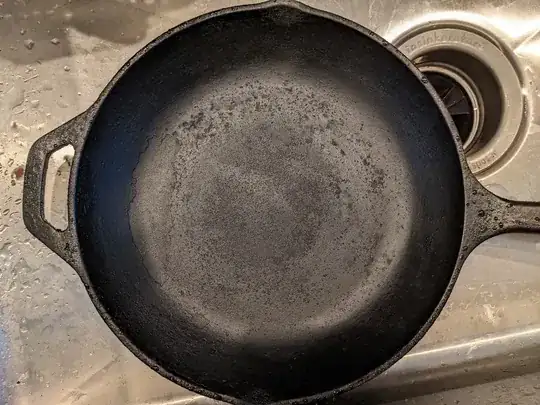I got this cast iron pan several years ago, and tried more than once to season it according to recommendations from articles I read. Each time, the process involved something like rubbing it with oil and sticking it in the oven, upside-down, for some amount of time. And each time, the pan came out not with a nice new seasoned surface, but just hot and wet.
So, I gave up and figured I'd acquire a seasoning naturally over time by cooking with it. And by now, I think I have - but the surface is highly pocked, and the sides are really rough and feel caked-up. In particular, there's a large section on the edge of the bottom (on the left in this picture) that simply flaked off last year when I was scraping particularly aggressively to remove some burnt-on food.

What's the best thing to do for this pan? Should I strip the seasoning entirely somehow and start over?